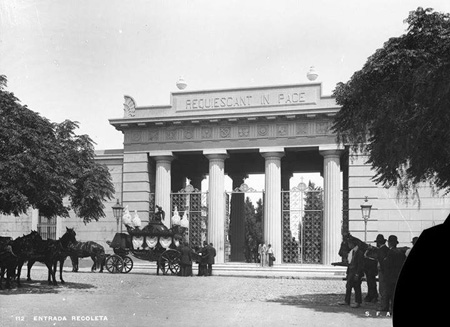
Burial photo with a splendid funeral carriage at the main entrance gate, c. 1890. Courtesy Archivo General de la Nación.
3 Comments
Burial photo with a splendid funeral carriage at the main entrance gate, c. 1890. Courtesy Archivo General de la Nación.
3 Comments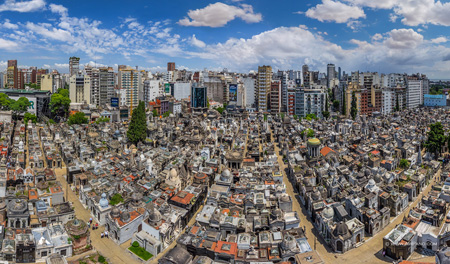
Things have changed since this blog began in 2007. Few knew what a drone was in those days & probably never suspected they could be acquired by civilians to give us a new perspective on cities we know & love. AirPano has done just that. Their story of recording footage in Buenos Aires was spot on… nope, those warnings are not to be taken lightly!
As one of the top sights in the city, I’m glad they decided to share the dense beauty of Recoleta Cemetery. Try to find the mausoleum where Eva Perón is buried… just look for the line of tourists 🙂
Click here for the full 360º aerial experience of Buenos Aires. #4 is Recoleta Cemetery. Thanks for sharing, AirPano!
Leave a Comment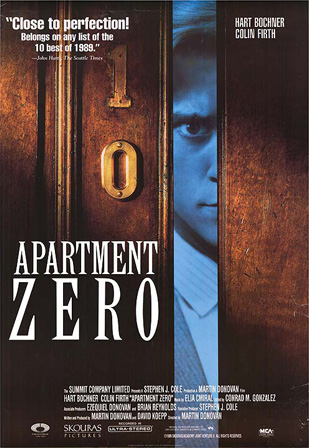
Filmed in Buenos Aires in 1988, Apartment Zero features a very young Colin Firth as Adrian Leduc—a reclusive cinema buff with a mentally-ill mother. American Jack Carney, played by hunky Hart Bochner, answers a newspaper ad to share Adrian’s apartment & everyone in the building falls for him, including Adrian. Of course, no 1980s movie based in Argentina would be complete without a Dirty War subplot.
What does all this have to do with Recoleta Cemetery? When Adrian’s mother dies, she is buried there. A reader of this blog suggested I watch Apartment Zero just for the cemetery scenes… thanks for the recommendation, Manuel:

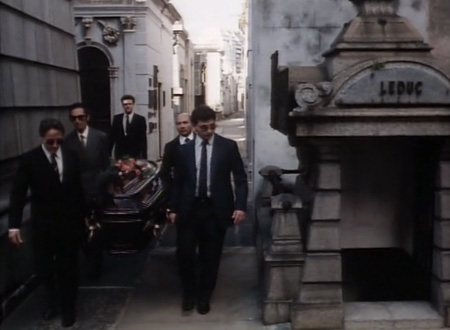
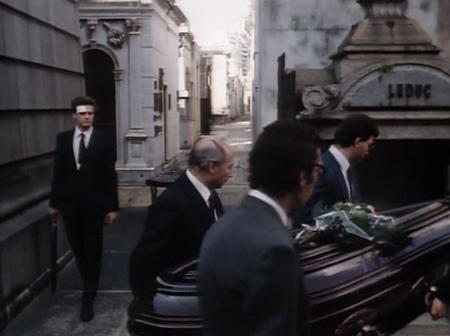
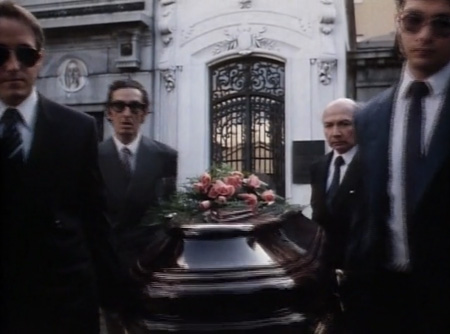
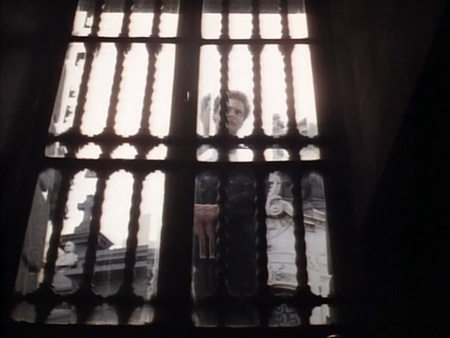
The tomb used in the movie was easy to identify, belonging to Álvaro Barros & family:
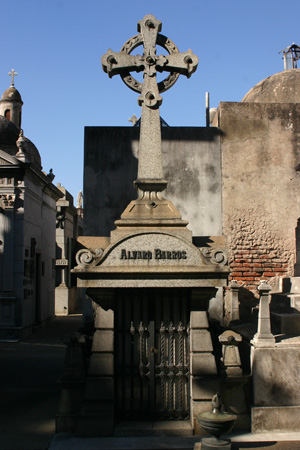
I’ve read that Highlander 2 used the cemetery for a single scene, but I’ve yet to find the footage. Know of any other movies filmed here? Let us know!
Leave a Comment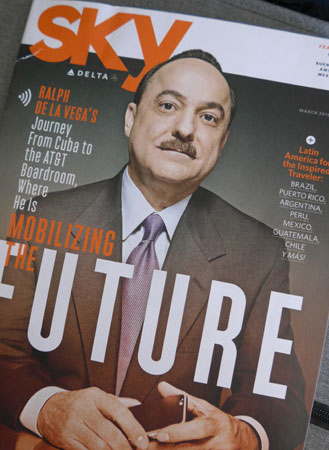
Imagine our surprise when flying Delta to Madrid & finding a mention of our website in this month’s issue of Delta Sky magazine! I’m sure my neighboring passengers thought, why is this guy taking photos of the in-flight magazine?? This is why:
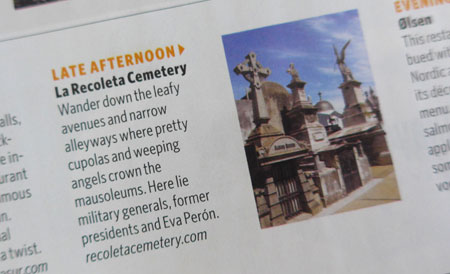
The show must go on… even if you aren’t around to see it. Important funeral homes like Lazaro Costa offered rental carriages for grand processions to Recoleta Cemetery. The above photo appeared as an advertisement in the society magazine “Caras & Caretas” with the following text:
For 200 pesos, a good funeral service with four horses & a footman, including an imitation mahogany coffin, open casket service, liveried carriages, notices placed in newspapers, etc.
Although a friend sent me this photo & did not record the publication date, surely this is from the early 20th century. Assuming this could be from 1915, 200 pesos would be the equivalent of $83 USD, or $1,930 USD in today’s currency!
6 Comments